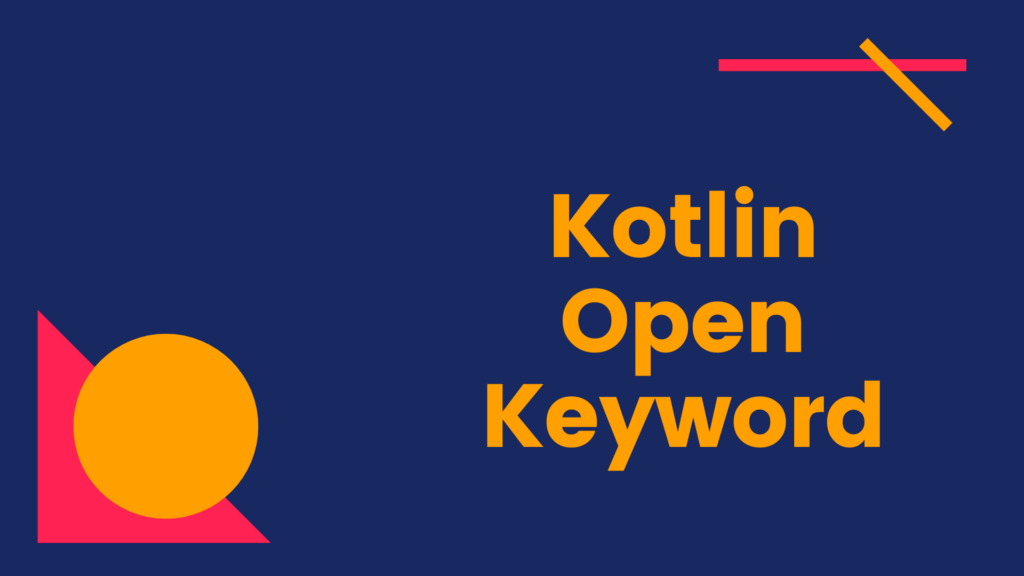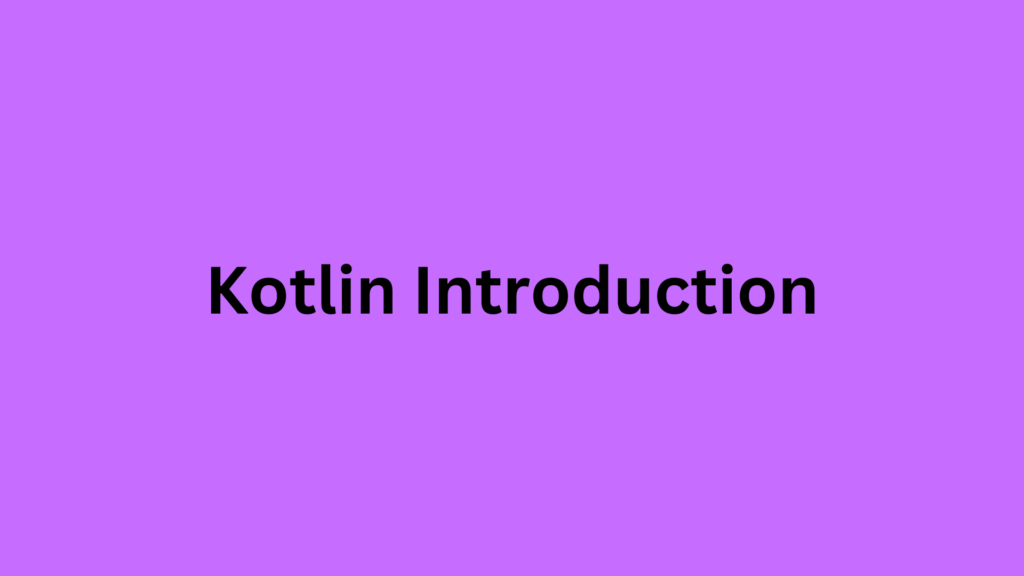Kotlin is a modern programming language that has become popular for its concise syntax, powerful features, and seamless interoperability with Java. One of the features that sets Kotlin apart from other languages is its support for named parameters. Named parameters provide developers with more flexibility and readability when working with functions and methods. In this article, we will cover all aspects of named parameters in Kotlin and provide examples to help you understand how they work.
What are named parameters?
Named parameters allow you to pass arguments to a function or method by specifying the parameter name along with its value. This provides greater clarity and reduces the chance of errors when calling functions with many parameters or when dealing with optional parameters.
For example, consider the following function in Kotlin:
fun createPerson(name: String, age: Int, address: String) {
// implementation here
}To call this function in Kotlin, you would typically pass the arguments in the order that they are defined in the function signature:
createPerson(\"amol pawar\", 25, \"House 23, Pune\")
With named parameters, you can specify the name of the parameters and their corresponding values, like this:
createPerson(name = \"amol pawar\", age = 25, address = \"House 23, Pune\")
This makes the code more readable and reduces the risk of passing the wrong values to the wrong parameters.
Kotlin introduced named parameters as a way to improve the readability and maintainability of code. In traditional programming languages, like Java, method parameters are passed in a specific order and it can sometimes be difficult to remember which parameter comes first, especially when the method has many parameters. Named parameters in Kotlin allow developers to specify the purpose of each parameter explicitly, making the code easier to understand and modify.
Named parameters also provide additional flexibility when calling functions or constructors. With named parameters, you can omit some parameters and use default values for them, while specifying values for only the parameters you care about. This can reduce the amount of boilerplate code needed and make the code more concise.
Another advantage of named parameters is that they make it easier to refactor code. When you add, remove, or reorder parameters in a function or constructor, you don’t need to worry about breaking any existing code that calls the function, as long as you use named parameters. This can save you time and effort when making changes to your code.
When using named parameters, it’s important to choose meaningful and descriptive names for the parameters.
Here is an example of using meaningful and descriptive names:
fun calculateBMI(weightInKg: Double, heightInCm: Double): Double {
val heightInMeters = heightInCm / 100
return weightInKg / (heightInMeters * heightInMeters)
}
val bmi = calculateBMI(weightInKg = 70.5, heightInCm = 175.0)
println(\"BMI: $bmi\")In this example, we have defined a function called calculateBMI that takes two parameters: weightInKg and heightInCm. By using meaningful and descriptive names for the parameters, we can make it clear what each parameter represents and what units they are measured in. We are also using named parameters when calling the calculateBMI function to make the code more readable and self-documenting.
How To Use Named Parameters in Kotlin?
Let’s see different use cases where we use named parameters in Kotlin
1. Using named parameters with default values
Kotlin also allows you to define default parameter values for functions, which are used when a value is not provided by the caller. When combined with named parameters, this can make your code even more concise and expressive.
Consider the following function, which defines a default value for the address parameter:
fun createPerson(name: String, age: Int, address: String = \"Unknown\") {
// implementation here
}With named parameters, you can call this function and only provide the non-default parameters:
createPerson(name = \"amol pawar\", age = 25)
In this example, the address parameter will default to \"Unknown\".
2. Using named parameters with both functions and constructors
Named parameters can be used with both functions and constructors in Kotlin. Here is an example of using named parameters with a constructor:
class Person(val name: String, val age: Int, val gender: String) {
// ...
}
val person = Person(name = \"Amol\", age = 30, gender = \"male\")In this example, we are creating an instance of the Person class using named parameters. By using named parameters, we can explicitly state the purpose of each parameter and make the code more readable.
Let’s see another example where we use default parameter values for one or more parameters.
fun printMessage(message: String, count: Int = 1) {
repeat(count) {
println(message)
}
}
printMessage(\"Hello\") // prints \"Hello\" once
printMessage(\"World\", 3) // prints \"World\" three timesIn this example, we have defined a function called printMessage that takes two parameters: message and count. The count parameter has a default value of 1, which means that if it is not specified when calling the function, it will default to 1.
One more use case we need to consider here is, we can use named parameters to specify only some of the parameters for a function or constructor, and omit others.
fun greet(name: String, greeting: String = \"Hello\") {
println(\"$greeting, $name!\")
}
greet(\"Amol\") // prints \"Hello, Amol!\"
greet(\"softAai\", \"Hi\") // prints \"Hi, softAai!\"In this example, we have defined a function called greet that takes two parameters: name and greeting. The greeting parameter has a default value of \"Hello\", which means that if it is not specified when calling the function, it will default to \"Hello\". By using named parameters, we can omit the greeting parameter and use the default value.
3. Using named parameters with both positional and non-positional arguments
In Kotlin, you can use named arguments with both positional and non-positional arguments. Here is an example of using named arguments with both types of arguments:
fun printValues(a: Int, b: Int, c: Int) {
println(\"a = $a, b = $b, c = $c\")
}
printValues(a = 1, b = 2, c = 3) // named arguments
printValues(1, c = 3, b = 2) // positional and named argumentsIn this example, we have defined a function called printValues that takes three parameters: a, b, and c. We can call this function using named arguments or a combination of positional and named arguments.
4. Using named parameters with varargs
Kotlin also supports varargs, which allows you to pass an arbitrary number of arguments to a function or method. When using named parameters with varargs, you can specify the name of the parameter and then provide a comma-separated list of values.
Consider the following function, which accepts a vararg of integers:
fun sum(vararg numbers: Int): Int {
return numbers.sum()
}To call this function with named parameters, you would specify the parameter name followed by a comma-separated list of values:
val result = sum(numbers = 1, 2, 3, 4, 5)
In this example, the numbers parameter is assigned the values 1, 2, 3, 4, 5.
5. Using named parameters with extension functions
Kotlin also allows you to use named parameters with extension functions, which are functions that can be called as if they were methods of an object.
Consider the following extension function, which adds an exclamation point to a string:
fun String.addExclamationPoint(times: Int = 1): String {
return this + \"!\".repeat(times)
}To call this extension function with named parameters, you would specify the parameter name followed by its value:
val result = \"Hello\".addExclamationPoint(times = 3)
In this example, the times parameter is assigned the value 3.
Named Parameters & Interoperability with Java
Kotlin is designed to be highly interoperable with Java, which means that Kotlin code can be used in Java projects and vice versa. However, when using named parameters in Kotlin, there are some considerations to keep in mind to ensure interoperability with Java code.
When calling a Kotlin function with named parameters from Java, the named parameters are not supported and instead, the arguments must be passed in the order that they are defined in the function signature. For example, consider the following Kotlin function with named parameters:
fun calculateArea(length: Int, width: Int, units: String = \"square units\"): String {
val area = length * width
return \"The area is $area $units\"
}To call this function from Java, the named parameters cannot be used, so the arguments must be passed in the correct order:
String result = MyKotlinClass.INSTANCE.calculateArea(10, 20, \"square meters\");
In this example, the arguments are passed in the order that they are defined in the Kotlin function signature, with the default value for the units parameter overridden by the value \"square meters\".
To make the Kotlin function more interoperable with Java code, it’s a good idea to define overloaded versions of the function that take only the required parameters in the correct order. For example:
@JvmOverloads
fun calculateArea(length: Int, width: Int): String {
return calculateArea(length, width, \"square units\")
}
In this example, the @JvmOverloads annotation is used to generate overloaded versions of the function that take only the required parameters, with the default value for the units parameter used. These overloaded functions can be called from Java code without having to use named parameters.
Advantages of Named Parameters in Kotlin:
- Increased readability: Named parameters can make code more readable and easier to understand by explicitly stating the purpose of each parameter.
- Improved code maintenance: Named parameters can reduce errors that might arise when code is being maintained or modified because changes to the code can be made without having to worry about the order of parameters.
- Flexibility: Named parameters can be used with default values, which can make code more concise and expressive.
- Better documentation: Named parameters can help to document the code and make it more self-explanatory.
- Easier to use with overloaded functions: Named parameters can make it easier to call overloaded functions by providing a clear indication of which parameters are being passed to the function.
Disadvantages of Named Parameters in Kotlin:
- Increased verbosity: Using named parameters can make code more verbose, which can make it harder to read and understand.
- Potential performance impact: Using named parameters can have a small performance impact due to the additional processing required to match the parameter names to their corresponding values.
- Potential confusion with similar parameter names: Named parameters can potentially cause confusion if the names of parameters are similar, which can make it harder to identify which parameter is being referred to.
- Potential for misuse: Named parameters can be misused if developers use them excessively or incorrectly, which can lead to code that is harder to read and maintain.
- Incompatibility with some Java code: Named parameters are not supported by Java, so when calling Kotlin code from Java, named parameters cannot be used. This can cause issues if Kotlin code is being integrated with existing Java codebases.
Summary
Overall, named parameters are a powerful feature in Kotlin that can make code more readable, maintainable, and expressive. By using them judiciously and following best practices, you can take advantage of the benefits of named parameters in your Kotlin code.










